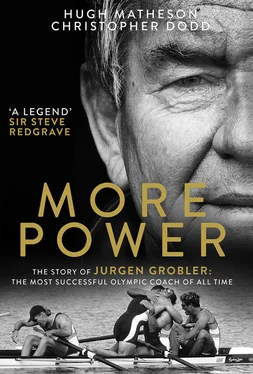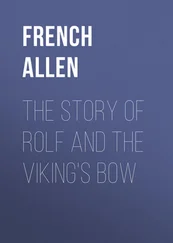Without doubt, the physiological effect of added testosterone and the methodology to establish the most beneficial dose will have been part of the curriculum that Grobler followed. The bulk of the research work at PhD level in the adaptation to sport of therapeutic drugs was carried out in the German College of Physical Culture in Leipzig. There, too, the research studied the damaging side effects and the point at which more damage than benefit was being felt, and when an athlete should be dropped from the programme.
The institute where Grobler was a student was the mothership of the East German sports doping programme, working to orders from the Politbüro. He and his classmates will not have been allowed to graduate without a deep understanding of the development of sports doping at that time. But, unlike almost every other person considering the problem elsewhere in the world, their freedom of expression, and even of thought, was strictly controlled. They had no choice. Even the option of a dignified resignation and exit from their career path was denied. If Grobler or any of his contemporaries had resigned over the state-sponsored doping regime, the quality of life for them and their families would have been compromised deeply and quickly. They could have been convicted and imprisoned for open conflict with the ‘vanguard of the people’ or its representative on earth, the Politbüro. More likely, they would have found that housing and work were denied them.
The authorities’ adverse reaction to a coach or athlete who bucked the system and refused the drugs is the explanation offered by Grobler himself on the few occasions when he has been challenged on his record of compliance with the regime. His mantra has been ‘You have to understand the system at that time. There was no room for disagreement.’
What is rarely admitted – probably because it sounds foolish to readers in a liberal western democracy – is that most of the population of East Germany were part of the collective consciousness expressed as ‘We are the state’. On the opening page of Das Rudern , the detailed rowing textbook published in 1977, the first paragraph ends:
‘The principal objectives of the sport of rowing in the GDR are: 1. The achievement of high performances in competitive rowing for men, women and youths, based on a wide membership, on a comprehensive and systematic basic training, and on a party and class-conscious education of the oarsman into a socialist sports personality.’
The third paragraph ends:
‘In addition, general or specific work in the sport of rowing is carried out in the German College of Physical Culture, in the various Sport Science Committees, in obligatory student sports, in schools, in the National People’s Army, and in the People’s Police, in agreement with the goals of the DRSV.’
These ‘socialist sports personalities’ were all willing and ‘conscious’ members of an elite in East German society that earned its privileges by working harder than anyone else to achieve the aims of the state in beating all contenders. They were the ‘vanguard of the people’ who represented the state abroad.
Already by 1972, only twenty-three years after the state came into existence and in only its second Olympic Games competing as a separate nation, the under-performance of its socialist economy was impossible to hide. For one thing, the Soviet Union had dismantled much of its satellite’s industry. For another, freedom of movement between East and West, difficult since 1945, was blocked completely in 1963 when the already robust frontier to the West was doubled in strength and the walled section through the divided city of Berlin was built. But during this Cold War, television had come to almost every household on both sides of the border, and so East Germans were reminded daily of the gulf in living standards.
In late August 1972 the sun shone on teams arriving in Munich and reflected off the revolutionary acrylic panels in the roof of the main stadium. Everything from the accommodation in the athlete village, to the U-Bahn underground system, to the rowing course at Oberschleißheim – built for the occasion at cost of DM7 million – seemed on the cutting edge of modernist architecture and design. It felt, and was, superior to any Olympic venue in the modern era. It pushed the boundaries of experience in the same way as, it was hoped, the competitions would push the boundaries of human physical achievement.
Into this showcase of expectation and glamour came a drably uniformed rowing team, picked not for their joy in taking part but for their probability of winning medals. There were seven events for men and none for women. A full team comprised twenty-six people, including three coxes. The East German team met the standard it had been set from above by winning a medal in each event. Güldenpfennig won bronze in the single sculls, while Hans-Joachim Böhmer and Hans-Ulrich Schmied also took bronze in the double sculls. East Germany won gold in the coxless pair with the youthful Siegfried Brietzke and Wolfgang Mager, and in the coxed pair with Wolfgang Gunkel and Jörg Lucke, steered by Klaus-Dieter Neubert. They won the coxless fours with arguably their best boat and most reliable medal bet, but lost the coxed fours to the West Germans who had put all their talent into the only boat they could see as a ‘banker’.
In the grand finale, the eights, East Germany’s young rowers, at the outset of their careers, were beaten into bronze-medal position by the reigning European champions New Zealand and by a surprise American crew in a photo finish. East Germany’s tally was three golds, one silver, and three bronzes. The next-best nation on the medal table, the Soviet Union, had two golds in the sculling events but nothing else. West Germany, New Zealand and Czechoslovakia had two medals each, and six nations had one apiece. GBR ranked 14 thon the results table. Manfred Ewald and SED secretary Walter Ulbricht should have rejoiced at the result of their directives.
The team and its coaches were rewarded with a cruise to Cuba, the only resort that combined an exotic location with the minimum risk of escape. Even for champion swimmers, Florida was a long way off.
Jürgen Grobler had fulfilled his state-sanctioned quota when Güldenpfennig took a medal at the first international experience for either of them. Both had been outsiders for selection in the winter before, but were now recognised members of the team and would not be dislodged easily. Grobler told Michael Calvin, writing for The Independent in 2012, that ‘I know I cannot run away from my past… some things that were going on at that time might not have been correct, but I can look everybody in the eye and not feel guilty. I am not a doping coach. I am not a chemist.’ That comment might be true superficially but, once deconstructed, it looks disingenuous.
In the winter of 1971–2 Grobler and Güldenpfennig had pushed themselves into the front line of a demonstration of state power focused on winning Olympic medals. In their climb through the ranks they had pushed weaker men aside. The East German team for the 1971 European rowing championships in Copenhagen had seventeen names later selected for Munich.
There was no obligation on Grobler or Güldenpfennig to force their way into the national reckoning. They chose to put their names into the record book. They achieved it by doing the training better than their contemporaries and by embracing the system wilfully and willingly. They knew about the Oral Turinabol and knew its benefits. At no point in his denials has Grobler said, ‘We tried it and found that it did not work.’
When the doping issue became a subject for debate in the 1990s after the collapse of East Germany, Grobler at first said he did not know about it. When that became untenable he said that ‘some things that were going on at that time might not have been correct, but I can look everybody in the eye and not feel guilty.’ It is perfectly conceivable that he does not feel guilty and does not think of himself as ‘a doping coach’ or a ‘chemist’. In the morality of that place and time he did no wrong. The list of drugs that were banned was short and badly defined. There were wide pharmacological roads around most of the bans. When Oral Turinabol was given to athletes it was proven to be extremely stable and in a therapeutic setting it had high safety ratings. It was effective in building lean muscle and bone mass. It was perfect for their purposes and it had two other qualities essential for the East German Olympic programme: it could be matched with epitestosterone to mask the evidence that the extra testosterone was synthetic, and it would be flushed out of the athlete’s body in a short time after the dose was stopped.
Читать дальше












